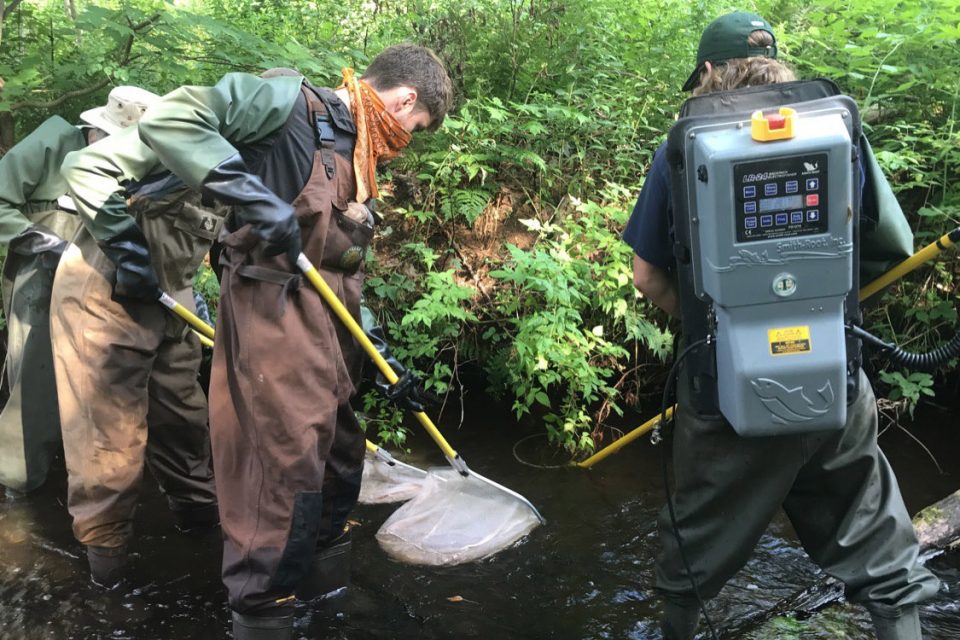Featured Projects
Hillsborough Rivers Association / Prince Edward Island / 2020
Habitat improvement for important stocks on Island rivers.

The project titled “Atlantic salmon habitat restoration and enhancement, phase two” and led by Hillsborough River Association, with $7,479 funded by ASCF, has implemented recommendations from a renewed Conservation Strategy for Atlantic Salmon on PEI (2019) on Pisquid River, Clark’s Creek, Vernon River, and Head of Hillsborough.
In response to the alarming rate of decline of Atlantic salmon (Salmo salar) across Prince Edward Island, in 2008 the Atlantic Salmon Conservation Foundation commissioned a comprehensive conservation strategy for Atlantic salmon on the Island. A decade later, the findings and recommendations of that strategy were revisited by the Oak Meadows group.
The number of rivers with salmon runs had dropped from about 70 prior to European settlement, to an estimated 28 in 2000-2002, with a further drop to 22 in 2007-2008. There is little question as to why this is happening. Prince Edward Island is one of the most densely populated provinces in Canada with intensive agricultural development and a changing climate.
“It will require major changes in the way crops are produced in PEI, as current agricultural practices are unsustainable. The costs associated with dealing with the issues of erosion, sedimentation, and chemical contamination of air, land and water will only increase in the future.”
The findings of the current study do, however, show some promising signs that Atlantic salmon are responding to the intensive conservation efforts of local watershed groups.
The Hillsborough River Association maintained beaver-free zones; worked with landowners in Vernon River to extend the beaver-free zone; expose gravel-cobble on mainstreams of Clark’s Creek and Pisquid River; maintained salmon access; expanded temperature monitoring in salmon rearing habitat to four watersheds; continued salmon monitoring with redd surveys and electrofishing; and mentored and educated student employees and local elementary school students.
In addition, HRA installed two rock weirs to create new holding pools; installed brush mats; planted native tree and shrub species to enrich diversity and create stream shade; installed cover structures primarily on Clark’s Creek; tested water for nitrates; made posts to social media; and removed silt from Head of Hillsborough in-stream silt traps.
